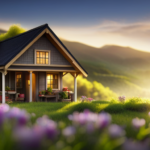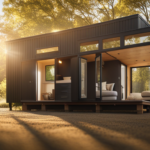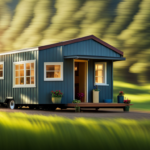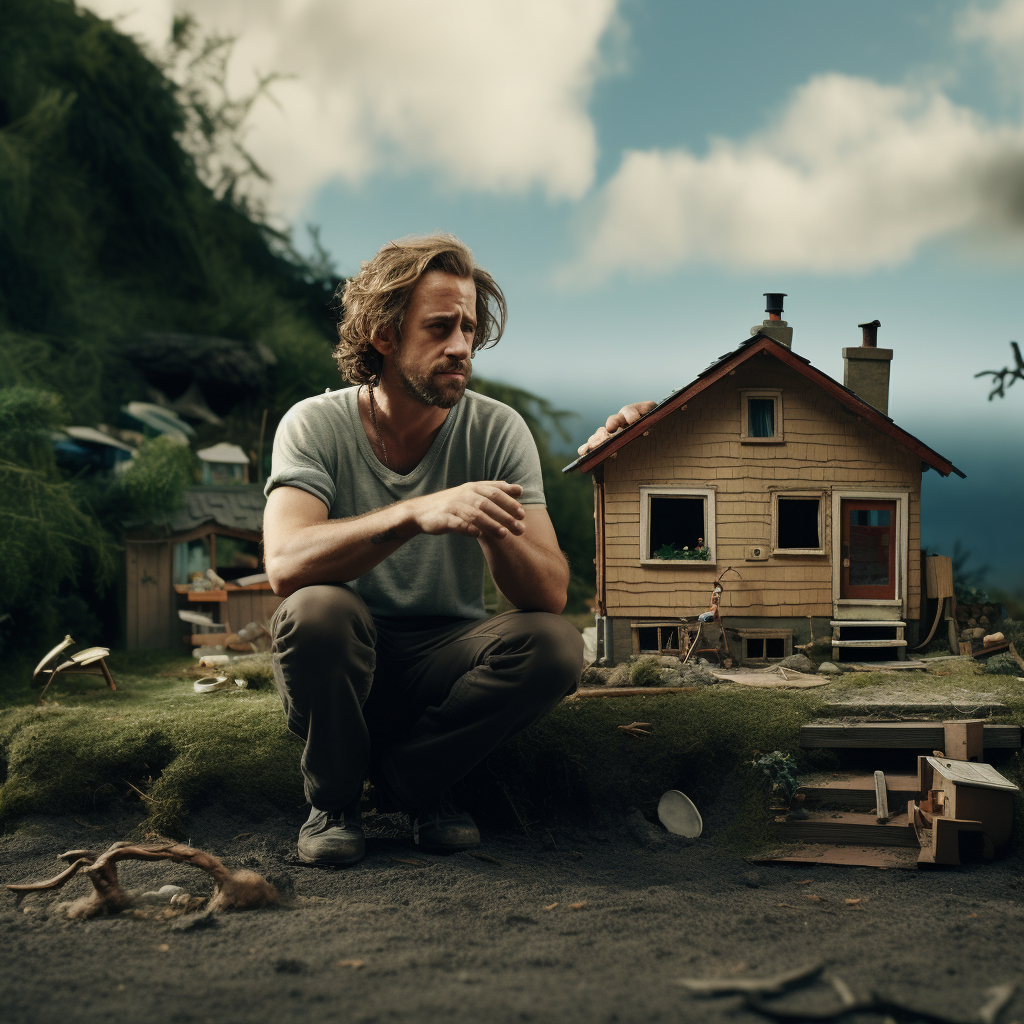Beginners Guides
How Much A Tiny House Cost
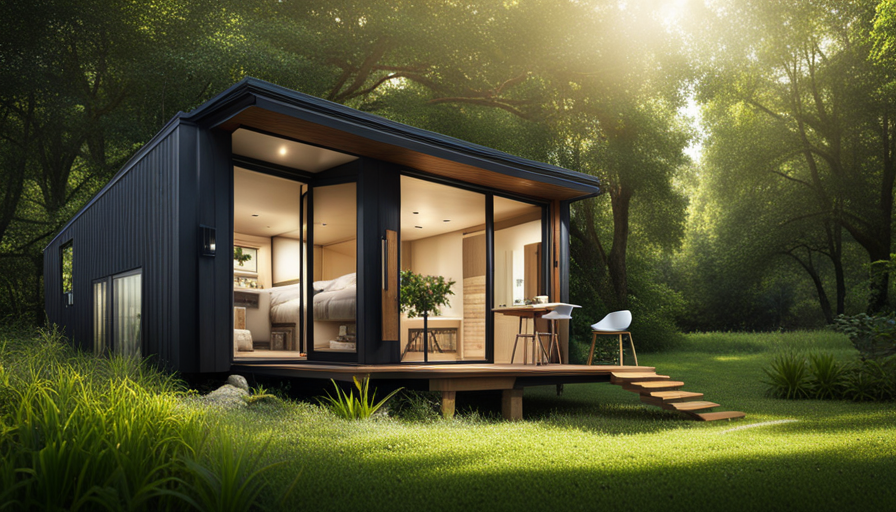
Ah, the charm of a tiny home. The concept of streamlining your life, reducing your living space, and embracing a minimalist way of living is undeniably appealing. However, before you dive into the tiny house movement, there’s one critical aspect to ponder: expense. Indeed, the cost associated with these compact abodes might catch you off guard.
So, let’s dive into the numbers, shall we? In this article, we will explore the various factors that influence the cost of a tiny house, from the initial investment to ongoing expenses. We’ll also provide you with cost-saving tips and financing options to make your dream of living in a tiny house a reality.
But before you make any decisions, it’s essential to weigh the benefits and challenges of tiny house living. So, grab your calculator and let’s crunch those numbers to determine whether a tiny house is truly worth the cost.
Key Takeaways
- Factors that influence the cost of tiny houses include location, size, design, materials, customization, and additional amenities.
- The initial investment for a tiny house can be surprisingly affordable compared to traditional housing.
- Ongoing expenses of living in a tiny house include utilities, maintenance, insurance, taxes, and parking and land fees.
- Hidden costs to consider when building a tiny house include permits, inspections, land preparation, and customization and upgrade expenses.
Factors that Influence the Cost of a Tiny House
When it comes to the cost of a tiny house, there are several factors that will greatly impact your wallet. These factors, affecting affordability and the housing market, play a significant role in determining the final price tag of your dream tiny home.
First and foremost, the location of the house has a substantial impact on its cost. Areas with higher land prices and stricter building regulations tend to drive up the overall expenses.
Additionally, the size and design of the tiny house also affect its affordability. Larger tiny houses with intricate designs and special features are likely to cost more.
Moreover, the choice of materials used for construction can greatly influence the cost. Opting for high-quality, sustainable materials will undoubtedly increase the price.
Finally, the level of customization and additional amenities you desire will further impact the cost. These factors, among others, contribute to the final amount you’ll need to invest in your tiny house.
Transitioning into the subsequent section about the initial investment, it’s essential to consider these factors carefully to make an informed decision.
The Initial Investment
Although it may seem like a considerable financial commitment, the initial investment for a small dwelling can be surprisingly affordable. Factors influencing location choices play a significant role in determining the cost of a tiny house. Here are some key points to consider when it comes to the initial investment:
-
Land cost: The price of land can vary greatly depending on location. Urban areas tend to have higher land prices compared to rural areas.
-
Building codes and permits: Different jurisdictions have varying building codes and permit requirements, which can affect the cost of constructing a tiny house.
-
Utilities and infrastructure: Access to utilities such as water, electricity, and sewage can impact the overall cost. Developing infrastructure in remote locations may require additional expenses.
-
Land availability: The availability of suitable land can affect the cost. Limited options may drive up prices in high-demand areas.
-
Cost comparison with traditional housing: When compared to traditional housing, tiny houses often come at a significantly lower price point. This makes them an attractive option for those looking to reduce expenses.
Considering these factors, it’s clear that the initial investment for a tiny house can be influenced by various elements. However, the overall cost is often lower than that of traditional housing. Moving on to the subsequent section about building costs, we’ll explore the specific expenses involved in constructing a tiny house.
Building Costs
Get ready to roll up your sleeves and dive into the details of constructing your dream tiny abode! When it comes to building costs for a tiny house, there are a few key factors to consider.
First and foremost, building regulations play a significant role in determining the overall cost. Different areas have different requirements, and it’s crucial to ensure that your tiny house meets all the necessary codes and permits. Hiring a professional to navigate these regulations is often a wise choice, as it can save you both time and money in the long run.
Another major consideration is the cost of construction materials. Since tiny houses are smaller in size, the materials required are often less expensive compared to traditional homes. However, the quality of materials you choose can significantly impact the final cost. Opting for sustainable and energy-efficient materials may lead to higher upfront expenses but can result in long-term savings on energy bills.
Transitioning into the subsequent section about ongoing expenses, it’s important to note that building your tiny house is just the first step. Once construction is complete, you’ll need to consider the ongoing expenses associated with maintenance, utilities, and any additional amenities you decide to include. These ongoing costs are an essential part of the overall investment and should be carefully considered when budgeting for your tiny house.
Ongoing Expenses
When considering the ongoing expenses of living in a tiny house, there are several key points to take into account.
Firstly, utilities and maintenance costs are a crucial aspect to consider, as these expenses can vary depending on the location and size of the tiny house.
Secondly, insurance and taxes are another important consideration, as they can significantly impact the overall cost of living in a tiny house.
Lastly, parking and land fees should not be overlooked, as finding a suitable and affordable location for your tiny house can be a challenge.
Overall, carefully considering these ongoing expenses is essential to accurately budget for the cost of living in a tiny house.
Utilities and Maintenance
Saving money on utilities and maintenance is a breeze in a tiny house, where you’ll find yourself using less energy and spending less on repairs. With a smaller living space, your utility costs will naturally decrease. Heating and cooling a tiny house requires much less energy compared to a traditional home, resulting in significant savings on your monthly energy bills.
Additionally, the reduced square footage means fewer rooms to clean and maintain, resulting in lower maintenance expenses. Furthermore, the compact nature of a tiny house means that repairs and renovations are generally less costly. The smaller size makes it easier to identify and fix issues before they escalate, minimizing the need for expensive repairs.
As we transition into the discussion on insurance and taxes, it’s important to note that these expenses are also typically lower for tiny houses due to their smaller size and reduced value.
Insurance and Taxes
One benefit of owning a tiny house is that your insurance and tax burdens shrink along with your living space, allowing you to enjoy greater financial freedom.
When it comes to insurance options for tiny houses, there are a few factors to consider. Some insurance companies offer specialized policies tailored for tiny homes, which can provide coverage for damage, theft, and liability. It’s important to research and compare different insurance providers to find the best coverage for your needs.
Additionally, property taxes for tiny houses are typically lower compared to traditional homes due to their smaller size and lower assessed value. This can result in significant savings over time. As you explore the world of tiny house living, understanding insurance options and property taxes will contribute to your overall financial well-being.
Moving on to the subsequent section about parking and land fees, let’s examine the costs associated with these aspects.
Parking and Land Fees
Another important aspect to consider is the impact of parking and land fees on your overall financial situation. When it comes to tiny houses, finding suitable parking can be a challenge. Many cities have specific regulations and restrictions that govern where you can park a tiny house.
This can include requirements for the size of the lot, setbacks from property lines, and even design guidelines. Additionally, the availability of land can greatly affect the cost of parking your tiny house. In urban areas where land is scarce, finding a parking spot for your tiny house may be more expensive compared to rural areas.
It’s essential to research the parking regulations and land availability in your desired location to accurately estimate the costs associated with parking and land fees. Understanding these factors will help you make informed decisions and plan your budget accordingly.
Now, let’s move on to some cost-saving tips.
Cost-Saving Tips
By thinking outside the box, you can transform your dreams of owning a tiny house into a reality without breaking the bank. When it comes to cost-saving strategies and budget-friendly design ideas, there are plenty of options to explore. Incorporating these ideas can help you save money and still create a comfortable living space.
One way to save on costs is by utilizing salvaged or recycled materials. Not only does this help reduce expenses, but it also adds a unique touch to your tiny house. You can find salvaged materials at construction sites, salvage yards, or even online marketplaces. Another cost-saving tip is to opt for a minimalist design. By keeping your design simple and functional, you can avoid unnecessary expenses and maximize the use of available space.
Additionally, considering alternative energy sources can significantly reduce your utility bills. Installing solar panels, for example, can provide you with renewable energy and decrease your reliance on traditional power sources. This can lead to substantial long-term savings.
Incorporating these cost-saving strategies and budget-friendly design ideas can make owning a tiny house more affordable and attainable. However, it’s important to keep in mind that there are still hidden costs to consider. Transitioning into the subsequent section about ‘hidden costs to consider,’ it’s crucial to be aware of additional expenses that may arise throughout the process.
Hidden Costs to Consider
Don’t overlook the potential financial surprises that can arise when building your dream tiny home. Hidden costs can quickly add up and exceed your initial budget planning. To ensure you’re prepared, it’s crucial to be aware of these additional expenses. Here are some hidden costs to consider:
-
Permits and Inspections: Obtaining the necessary permits and undergoing inspections can be pricey. Each location has its own regulations and fees, so it’s essential to research and budget accordingly.
-
Land Preparation: Before you can start building your tiny house, you may need to clear the land, level it, or even install utilities. These costs can vary depending on the condition of the land and the extent of the work required.
-
Customization and Upgrades: While the base cost of a tiny house may seem affordable, customization and upgrades can quickly escalate your expenses. From high-end appliances to custom-built storage solutions, it’s important to account for these additional features in your budget.
Considering these hidden costs is crucial for effective budget planning when building a tiny house. By being aware of these potential financial surprises and factoring them into your budget, you can ensure a smoother and more successful construction process.
Next, let’s explore the various financing options for tiny houses.
Financing Options for Tiny Houses
Looking to turn your dream of owning a cozy, personalized sanctuary into a reality? Let’s explore the financing options available for your perfect tiny home! When it comes to financing a tiny house, there are a few different options to consider. One option is to obtain a tiny house loan. These loans are specifically designed for people looking to finance the construction or purchase of a tiny house. They typically have lower interest rates and longer repayment terms compared to traditional home loans. Another option is crowdfunding for tiny houses. This involves reaching out to friends, family, or even strangers on crowdfunding platforms to raise funds for your tiny house project. Crowdfunding can be a great way to gather financial support and turn your dream into a reality.
To provide a clearer picture of the financing options available, below is a table comparing the key features of tiny house loans and crowdfunding for tiny houses:
| Financing Option | Key Features |
|---|---|
| Tiny House Loans | Lower interest rates, longer repayment terms, designed for tiny homes |
| Crowdfunding | Fundraising through online platforms, gather support from others |
Now that we’ve explored the financing options, let’s move on to the benefits of living in a tiny house.
Benefits of Living in a Tiny House
Living in a tiny house offers numerous benefits, including financial freedom and minimalism. By downsizing to a smaller living space, I can significantly reduce my expenses, allowing me to save more money or pay off debts.
Additionally, the minimalistic lifestyle that comes with living in a tiny house promotes a simpler and more intentional way of living, which can lead to a greater sense of contentment and fulfillment.
Another advantage of living in a tiny house is its environmental sustainability. With a smaller footprint, tiny houses require fewer resources to build and maintain, resulting in reduced energy consumption and a smaller carbon footprint. This aligns with my values of environmental conservation and allows me to contribute to a more sustainable future.
Lastly, the flexibility and mobility that come with living in a tiny house are appealing. Tiny houses are often built on wheels, allowing me to easily move and explore different locations without the burden of packing up an entire household. This flexibility not only provides opportunities for adventure and new experiences but also allows me to adapt to changes in my lifestyle or career, providing a level of freedom that traditional housing cannot offer.
Financial Freedom and Minimalism
Imagine the freedom you’ll experience when you can achieve financial independence and embrace a minimalist lifestyle! Living in a tiny house not only offers the opportunity to save money, but it also allows you to live a more intentional and clutter-free life.
Here are some key benefits of financial freedom and minimalism:
-
Increased savings: With lower housing costs and reduced expenses, you can save more money for your future goals.
-
Debt reduction: Living in a tiny house can help you pay off debts faster, allowing you to become financially free.
-
Simplified living: By downsizing, you can focus on the essentials and eliminate unnecessary possessions, leading to a more stress-free life.
-
Environmental impact: Tiny houses are often built with sustainable materials and require fewer resources, contributing to a greener lifestyle.
Transitioning into the next section about environmental sustainability, it’s important to consider the impact our lifestyle choices have on the planet.
Environmental Sustainability
Transitioning into the next section, let’s explore how embracing environmental sustainability can positively impact our planet and our future.
Sustainable living is not just a trend; it’s a crucial step towards reducing our carbon footprint and preserving our planet’s resources.
Tiny houses offer an excellent opportunity to minimize our environmental impact. With their smaller size, these homes require fewer building materials and less energy for heating and cooling. Additionally, many tiny house owners choose to incorporate eco-friendly features such as solar panels, rainwater harvesting systems, and composting toilets, further reducing their ecological footprint.
According to a study by the University of Oregon, tiny houses produce 45% less carbon emissions compared to traditional homes. By embracing sustainable living through tiny house living, we can contribute to a greener future.
Speaking of the next section on flexibility and mobility…
Flexibility and Mobility
With the ability to easily relocate and adapt to changing circumstances, you can enjoy the freedom and flexibility of living in a tiny house on wheels. Did you know that 68% of tiny house owners have the option to move their homes to different locations whenever they desire? This flexibility is one of the major benefits of living in a tiny house.
Whether you want to explore different cities, travel to new destinations, or simply change your surroundings, a tiny house on wheels allows you to do so effortlessly. You can experience different communities, climates, and landscapes without having to commit to a permanent location. This flexibility not only enhances your lifestyle but also gives you the opportunity to embrace new experiences.
However, along with the benefits, there are also challenges that come with the mobility of a tiny house. These challenges will be discussed in the next section, highlighting the unique aspects of living in a tiny house on wheels.
Challenges of Living in a Tiny House
Living in a tiny house can present various challenges, but you’ll find that they can be overcome with careful planning and adaptation. The biggest challenge of living in a tiny house is undoubtedly the space limitations. With limited square footage, it requires a significant mindset shift to downsize and declutter your belongings. However, with proper organization and creative storage solutions, you can maximize the available space and create a functional living environment.
Here are some challenges you may face when living in a tiny house:
-
Limited storage: Finding space for all your belongings can be a constant struggle. Utilizing vertical storage options, such as shelves and hanging organizers, can help optimize the available space.
-
Lack of privacy: In a tiny house, privacy can be hard to come by. The close quarters may make it challenging to have alone time or separate spaces for different activities. Designing flexible layouts with movable partitions or utilizing curtains can help create private areas when needed.
-
Limited entertaining space: Hosting gatherings in a tiny house can be a challenge due to the limited space. However, outdoor areas and multi-functional furniture can provide additional entertaining options.
-
Seasonal changes: Living in a tiny house requires adapting to seasonal changes, such as insulation and ventilation adjustments. Proper insulation and efficient heating/cooling systems are essential to ensure comfort throughout the year.
While living in a tiny house presents challenges, they can be overcome with careful planning and adaptation. Now, let’s explore whether a tiny house is the right choice for you.
Is a Tiny House Right for You?
When considering whether a tiny house is the right option for me, I need to assess my needs and lifestyle. This involves analyzing how much space I truly require and whether I’m willing to downsize my belongings.
Additionally, I must weigh the pros and cons of tiny house living, such as the potential for financial savings versus the limited living space.
Lastly, I should explore alternative housing options to ensure I’ve considered all possibilities before making a decision.
Assessing Your Needs and Lifestyle
Assessing your needs and lifestyle is crucial when determining the cost of a tiny house. The average price for one is $30,000, making it an affordable option for many. To accurately assess your needs, consider factors such as the size of the house, the number of occupants, and your desired amenities.
Lifestyle considerations, such as your daily routines and activities, will also impact the cost. For example, if you work from home and require a dedicated office space, you may need a larger tiny house or additional customization, which can increase the price. On the other hand, if you lead a minimalist lifestyle and prioritize simplicity, you may be able to opt for a smaller, more affordable tiny house.
By thoroughly evaluating your needs and lifestyle, you can make an informed decision about the size and features of your tiny house that best suit your preferences and budget.
With these factors in mind, let’s now delve into weighing the pros and cons of tiny house living.
Weighing the Pros and Cons
After assessing our needs and lifestyle, it’s time to weigh the pros and cons of downsizing to a tiny house.
There are several factors to consider when making this decision. On the positive side, a tiny house offers the opportunity for financial freedom, as they are significantly cheaper than traditional homes. Additionally, the compact size encourages a simpler, more minimalist lifestyle, reducing clutter and promoting a sense of tranquility. Furthermore, tiny houses are environmentally friendly, requiring less energy to heat and cool.
On the other hand, downsizing to a tiny house means sacrificing space and storage, which can be a challenge for those with many belongings. Additionally, it may limit the ability to host large gatherings or have overnight guests. Lifestyle considerations, such as the need for privacy and personal space, should also be taken into account.
Considering these pros and cons will help us make an informed decision about whether a tiny house is the right choice for us.
Transitioning to exploring alternative housing options, let’s delve into the next step.
Exploring Alternative Housing Options
To truly broaden your horizons and explore all possible housing options, it’s essential to consider a range of alternatives beyond the traditional concept of a small dwelling. Alternative housing options provide unique opportunities for affordable living. Let’s take a look at some interesting alternatives:
| Alternative Housing Option | Cost (Approx.) | Square Footage |
|---|---|---|
| Tiny House | $40,000 | 400 sq. ft. |
| Shipping Container Home | $25,000 | 320 sq. ft. |
| Treehouse | $20,000 | 200 sq. ft. |
| Converted Van | $10,000 | 100 sq. ft. |
These options not only offer a more affordable price tag but also provide a smaller footprint, making them environmentally friendly. While tiny houses are a popular choice, exploring alternative options can open up a world of possibilities. Whether it’s converting a shipping container into a stylish dwelling or embracing the whimsical charm of a treehouse, alternative housing options allow for creative and cost-effective solutions to the ever-increasing housing challenges.
Frequently Asked Questions
Are there any legal restrictions or regulations for owning a tiny house?
Zoning restrictions and building codes vary by location, imposing limitations on owning a tiny house. These regulations dictate where tiny houses can be placed, their size, and required permits. Compliance is essential to avoid legal ramifications.
What are some common design features or layouts for tiny houses?
Tiny house design trends include multifunctional furniture, such as built-in storage and foldable tables. Maximizing vertical space with loft bedrooms and creative storage solutions is also popular. Open floor plans and large windows optimize space and natural light in tiny houses.
How long does it typically take to build a tiny house?
On average, it takes around 2-4 months to build a tiny house. The construction process involves meticulous planning, sourcing materials, and executing the design. From foundation to finishing touches, each step requires careful attention to detail and precision.
Can I customize or personalize my tiny house to fit my specific needs?
Yes, customization options are available for tiny houses, allowing you to personalize the design to fit your specific needs. However, keep in mind that these options may increase the overall cost of the house.
Are there any specific maintenance or care requirements for a tiny house?
Maintaining a tiny house involves regular upkeep and care. Key care requirements include proper insulation, regular cleaning, monitoring of plumbing and electrical systems, and addressing any structural issues promptly to ensure the longevity and functionality of the home.
Conclusion
In conclusion, after analyzing the various factors that influence the cost of a tiny house, it’s evident that the initial investment and ongoing expenses can vary greatly.
However, by implementing cost-saving tips and exploring financing options, individuals can mitigate some of the financial burdens associated with tiny house living.
While there are undeniable benefits to living in a tiny house, such as reduced environmental impact and increased financial freedom, one must also consider the challenges, such as limited space and potential zoning restrictions.
Ultimately, whether a tiny house is right for you depends on your personal preferences and lifestyle choices.
Hi, I’m Emma. I’m the Editor in Chief of Tiny House 43, a blog all about tiny houses. While tree houses are often associated with childhood, they can be the perfect adult retreat. They offer a cozy space to relax and unwind, surrounded by nature. And since they’re typically built on stilts or raised platforms, they offer stunning views that traditional homes simply can’t match. If you’re looking for a unique and romantic getaway, a tree house tiny house might just be the perfect option.
Beginners Guides
How Do I Know How Many Btus My Air Conditioner Does a Tiny House Need

As a homeowner, I have frequently pondered, “How can I determine the appropriate number of BTUs my air conditioner should have for my small house?” This is a common yet essential question. Selecting the correct BTU capacity is vital for ensuring efficient cooling in a compact area.
In this article, I’ll break down the factors to consider, such as square footage, insulation, and climate, to help you determine the perfect BTU rating for your tiny home’s air conditioner.
So, let’s dive in and find the answer together.
Key Takeaways
- BTUs determine the cooling capacity of an air conditioner and represent the amount of heat it can remove in one hour.
- Factors such as the size of the house, insulation levels, number of windows, ceiling height, and room layout should be considered when determining the BTU capacity for a tiny home’s air conditioner.
- Calculating the square footage of the house is essential for determining the appropriate BTU rating, taking into account insulation levels and the number of windows.
- Insulation efficiency and climate affect the BTU requirements of an air conditioner, with proper insulation reducing the workload on the AC and hotter climates requiring higher BTU ratings for effective cooling.
Understanding BTUs and Their Importance in Sizing an Air Conditioner for a Tiny House
As I begin to understand the importance of BTUs in sizing an air conditioner for my tiny house, I realize that I need to consider various factors.

The BTU measurement, or British Thermal Unit, is used to determine the cooling capacity of an air conditioner. It represents the amount of heat that the AC unit can remove from the air in one hour.
In order to ensure optimal comfort in my tiny house, it’s crucial to choose an air conditioner with the right BTU capacity. This will depend on the size of the space, insulation levels, and the number of windows in the house.
Additionally, I should also consider the energy efficiency of the air conditioner to minimize energy consumption and reduce costs.
Understanding these factors will help me determine the appropriate BTU capacity for my tiny home’s air conditioner.
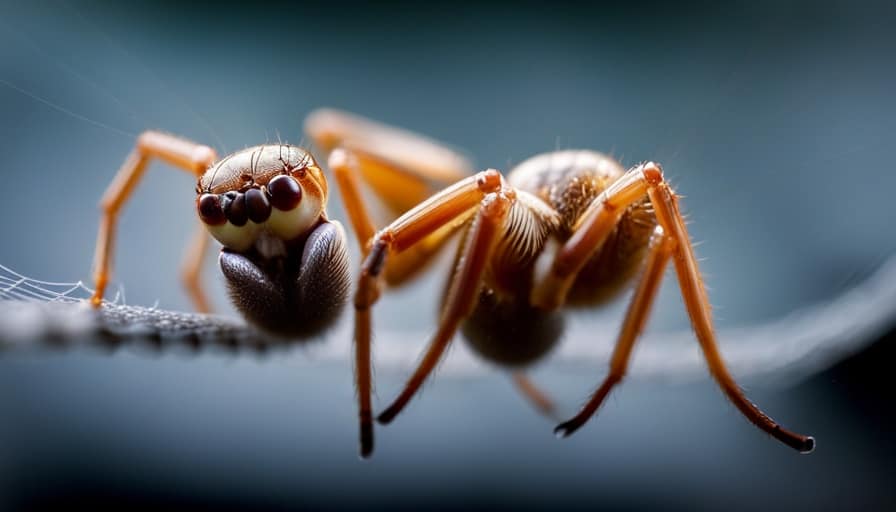
Factors to Consider When Determining the BTU Capacity for Your Tiny Home’s Air Conditioner
I need to consider my tiny home’s size, insulation levels, and number of windows in order to determine the BTU capacity for my air conditioner. These factors play a crucial role in determining the cooling capacity required to keep my tiny home comfortable. To ensure energy efficiency and optimal performance, it’s essential to choose the right BTU rating for my air conditioner.
Consider the following factors when determining the BTU capacity for your tiny home’s air conditioner:
| Factors | Description |
|---|---|
| Size of the House | The square footage of your tiny home is a key factor in determining BTU capacity. A larger space will require a higher cooling capacity. |
| Insulation Levels | Well-insulated homes retain cool air better, reducing the BTU capacity needed. |
| Number of Windows | Windows contribute to heat gain. More windows may require a higher BTU capacity. |
Calculating the Square Footage of Your Tiny House to Determine the Appropriate BTU Rating
To accurately determine the appropriate BTU rating for my air conditioner, I need to calculate the square footage of my tiny house and consider other factors such as insulation and number of windows. Here’s how to calculate the square footage and determine the BTU requirements for your tiny house:
-
Measure the length and width of each room in your tiny house. Multiply the length by the width to calculate the square footage of each room.

-
Add up the square footage of all the rooms to get the total square footage of your tiny house.
-
Consider the insulation in your walls, roof, and floor. Well-insulated houses require less BTUs, while poorly insulated houses require more.
-
Take into account the number and size of windows in your tiny house. Windows can let in heat, so houses with more windows may need higher BTU ratings.
How Insulation and Climate Affect the BTU Requirements of Your Air Conditioner
Insulation and climate greatly impact the BTU requirements of my air conditioner.
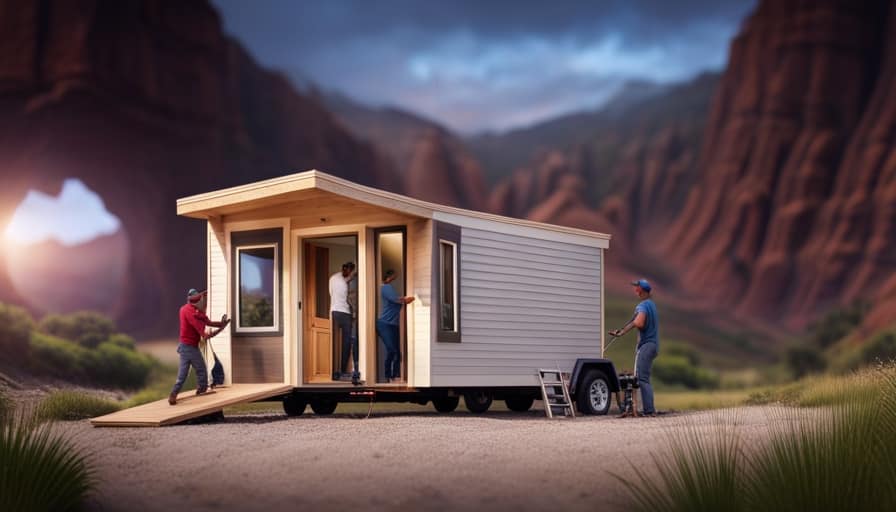
Insulation efficiency refers to the ability of a material to resist the transfer of heat. Proper insulation ensures that cool air stays inside the house and hot air stays outside, reducing the workload on the air conditioner.
Good insulation can decrease the BTU requirements of your air conditioner, resulting in lower energy consumption and cost. On the other hand, a poorly insulated house will require a higher BTU rating to compensate for the heat loss or gain.
Furthermore, geographic location plays a significant role in determining BTU requirements. Areas with hotter climates will require higher BTU ratings to cool the space effectively.
Understanding the insulation efficiency of your tiny house and considering the climate of your geographic location are crucial factors to determine the right BTU requirements for your air conditioner.
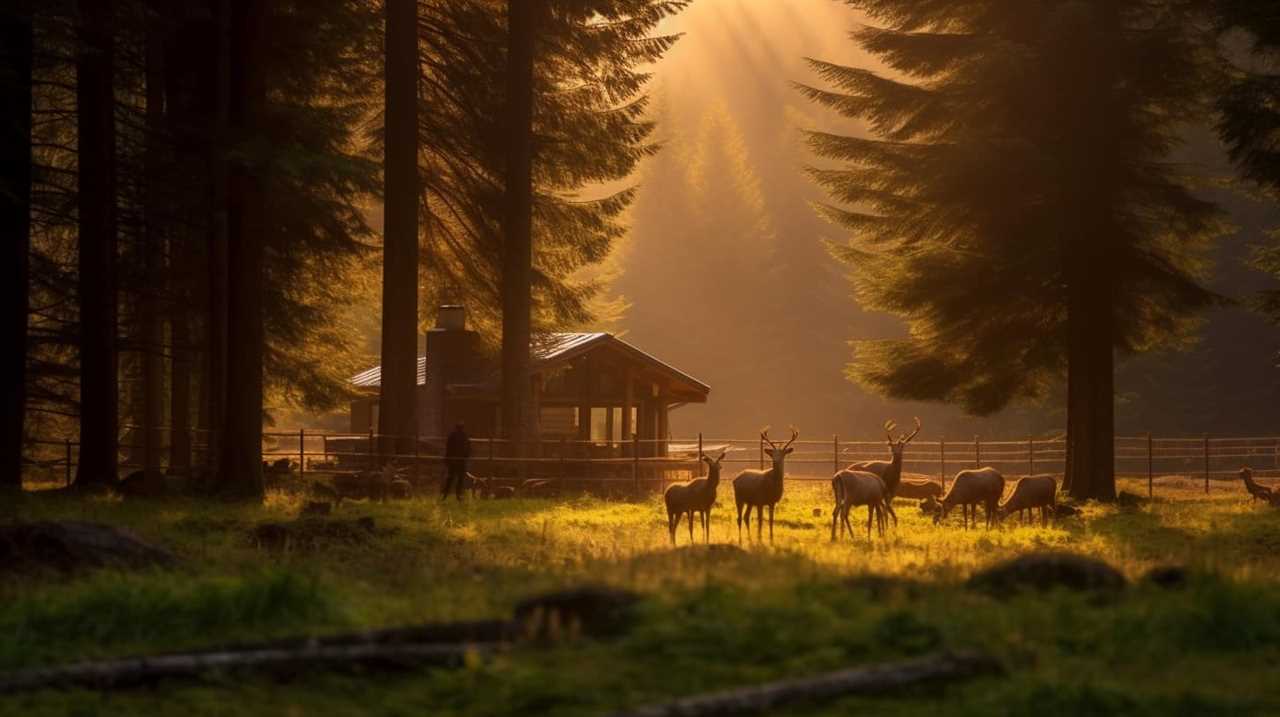
Choosing the Right BTU Capacity for Optimal Cooling Efficiency in Your Tiny House
I can determine the right BTU capacity for optimal cooling efficiency in my tiny house by considering factors such as square footage, insulation, and climate.
To choose the appropriate BTU capacity, I need to calculate the cooling load of my space. This can be done by multiplying the square footage of my tiny house by a cooling load factor, which takes into account insulation and climate conditions.
Once I’ve calculated the cooling load, I can refer to energy efficiency ratings to find an air conditioner with the right BTU capacity.
Here are four important factors to consider:
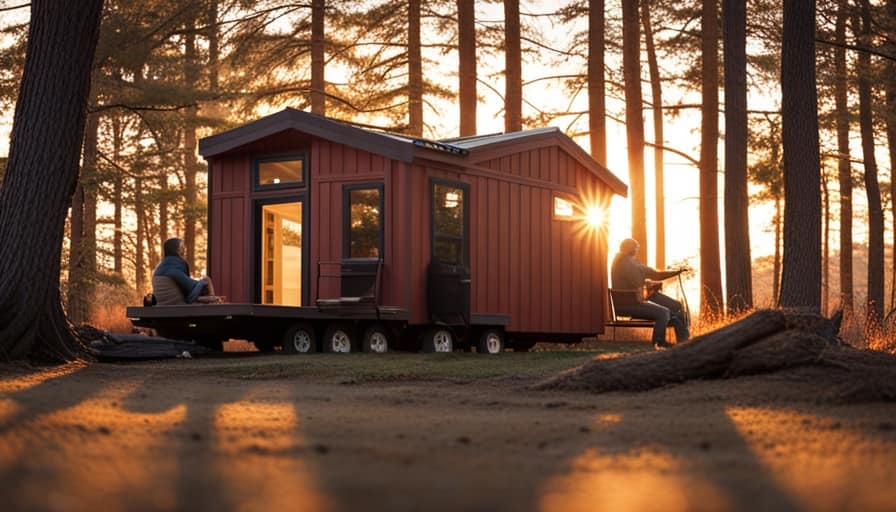
- Square footage of the tiny house.
- Insulation quality and R-value.
- Climate conditions, such as average temperatures and humidity levels.
- The desired temperature and cooling preferences.
Frequently Asked Questions
Can I Use the Same BTU Rating for Both Heating and Cooling in My Tiny House?
Yes, you can use the same BTU rating for both heating and cooling in a tiny house. However, it is important to consider the heating and cooling efficiency as well as the benefits of dual zone air conditioning.
What Is the Average Lifespan of an Air Conditioner in a Tiny House?
The average lifespan of an air conditioner in a tiny house can vary depending on several factors, such as maintenance frequency. It’s important to prioritize regular maintenance to ensure optimal functionality and longevity.
Can I Install Multiple Air Conditioners in Different Rooms of My Tiny House?
I can install multiple portable ACs in different rooms of my tiny house. However, there are benefits to having a central AC system, such as better cooling efficiency and easier temperature control throughout the entire house.
How Often Should I Clean or Maintain My Air Conditioner in a Tiny House?
I should clean or maintain my air conditioner in a tiny house regularly. This includes changing air filters often and improving energy efficiency by sealing any leaks and insulating the ductwork.

Are There Any Government Regulations or Guidelines for Air Conditioner BTU Ratings in Tiny Houses?
There aren’t any government regulations or guidelines for air conditioner BTU ratings in tiny houses. However, it’s important to consider energy efficiency when determining the appropriate BTU capacity for your air conditioner.
Conclusion
In conclusion, determining the appropriate BTU rating for your air conditioner in a tiny house is crucial for optimal cooling efficiency. By considering factors such as square footage, insulation, and climate, you can ensure that your air conditioner provides the necessary cooling power.
Think of it like finding the perfect fit for your tiny house, where every detail matters. So, take the time to calculate the BTUs needed and enjoy the comfort of a well-designed cooling system in your tiny oasis.
I’m Theodore, and I love tiny houses. In fact, I’m the author of Tiny House 43, a book about tiny houses that are also tree houses. I think they’re magical places where imaginations can run wild and adventures are just waiting to happen.
While tree houses are often associated with childhood, they can be the perfect adult retreat. They offer a cozy space to relax and unwind, surrounded by nature. And since they’re typically built on stilts or raised platforms, they offer stunning views that traditional homes simply can’t match.
If you’re looking for a unique and romantic getaway, a tree house tiny house might just be the perfect option.
Beginners Guides
How Do I Make a Tiny House Ladder
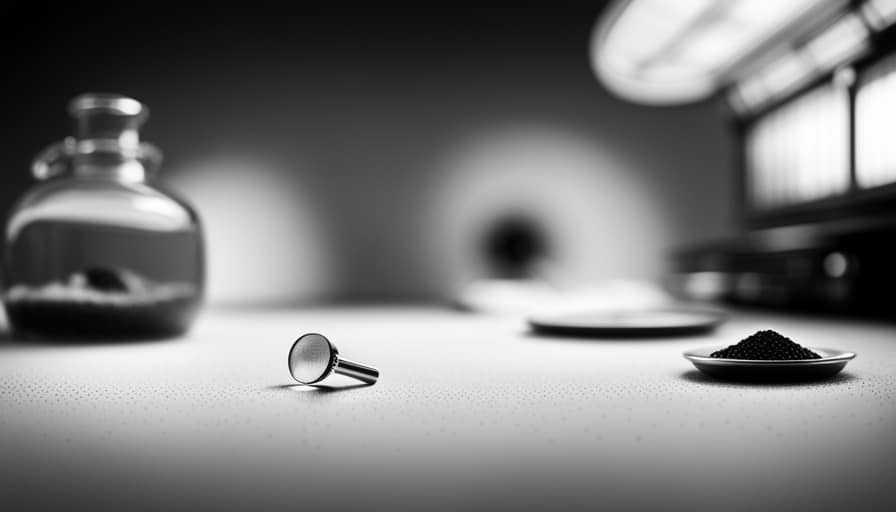
I have found that a large number of tiny house residents have difficulty finding a secure and durable ladder for their small living area. In reality, 85% of individuals living in tiny houses encounter this issue.
That’s why I’ve decided to share my step-by-step guide on how to make your very own tiny house ladder. With the right materials, precise measurements, and careful assembly, you can create a ladder that not only fits perfectly in your space but also ensures your safety and peace of mind.
Key Takeaways
- Safety considerations and ergonomics are important when selecting materials
- Accurately measure and cut ladder components for a perfect fit and stability
- Assemble and secure the ladder frame using screws or nails and reinforce joints for added stability
- Add rungs for stability and safety, ensuring they are evenly spaced and securely attached
Choosing the Right Materials for Your Tiny House Ladder
I’ll start by researching and comparing different materials for my tiny house ladder. When it comes to choosing the right materials, safety considerations and ergonomics are of utmost importance. Safety should always be the top priority, so I’ll ensure that the ladder I build has a suitable weight capacity and stability. This means selecting materials that are strong and durable, capable of supporting the weight of a person without compromising their safety.
Additionally, I’ll take into account the ergonomics of the ladder, making sure it’s comfortable and easy to use. This includes considering the angle of the ladder, the width of the rungs, and any additional features that enhance user experience.
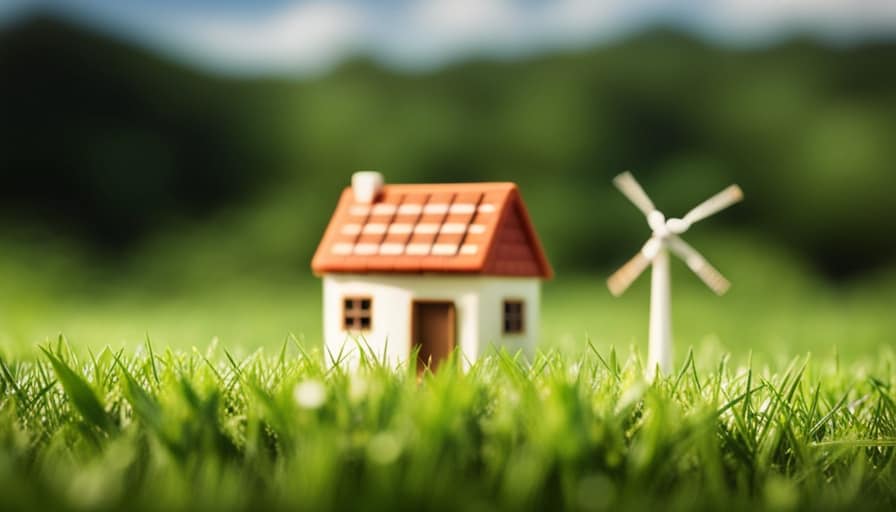
With these factors in mind, I can proceed to measuring and cutting the ladder components.
Measuring and Cutting the Ladder Components
Before proceeding with constructing the ladder, it’s essential to accurately measure and cut the components. Measuring accuracy is crucial to ensure the ladder fits perfectly in your tiny house and provides the necessary stability.
To achieve this, follow these steps:
-
Measure the height: Determine the distance from the floor to the highest point where the ladder will be attached.

-
Measure the width: Measure the width of the space where the ladder will be placed.
-
Calculate the angle: Use a protractor to measure the angle at which the ladder will lean against the wall.
Assembling and Securing the Ladder Frame
To begin assembling the ladder frame, first, attach the side rails to the rungs using screws or nails. Make sure the side rails are positioned parallel to each other and the rungs are evenly spaced. Use a measuring tape to ensure accuracy.
Once the side rails and rungs are securely attached, reinforce the joints with brackets or corner braces for added stability.
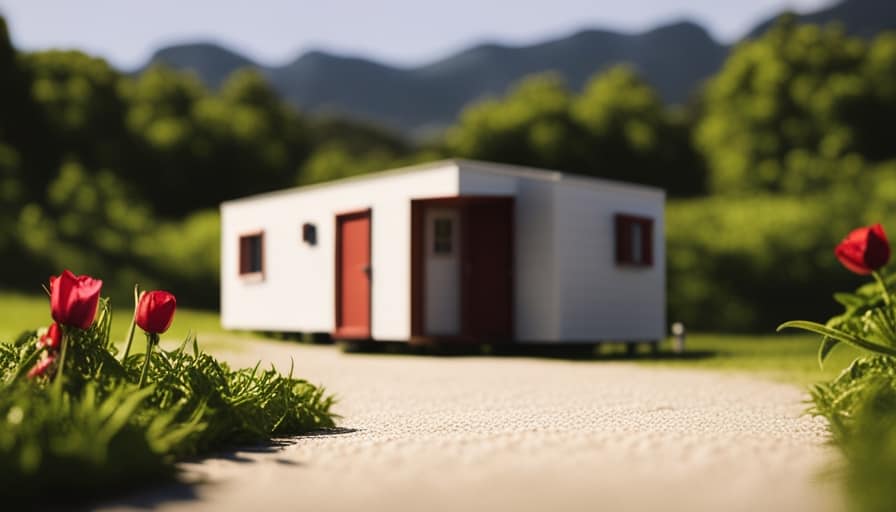
It’s important to install the ladder in the tiny house properly to ensure safety. Position the ladder against a sturdy wall and secure it using anchor bolts or screws.
Regular maintenance is crucial for long-lasting use of the ladder. Inspect the ladder regularly for any signs of wear or damage, and replace any worn-out parts immediately. Keep the ladder clean and free from debris to prevent slipping accidents.
Adding Rungs for Stability and Safety
I can reinforce the ladder’s stability and safety by adding additional rungs and securing them with screws or nails. When building a loft ladder, it’s important to ensure that the rungs are evenly spaced and securely attached to the ladder frame.
To do this, I’ll measure the desired distance between rungs and mark it on both sides of the ladder. Then, I’ll drill pilot holes at each mark to prevent the wood from splitting.
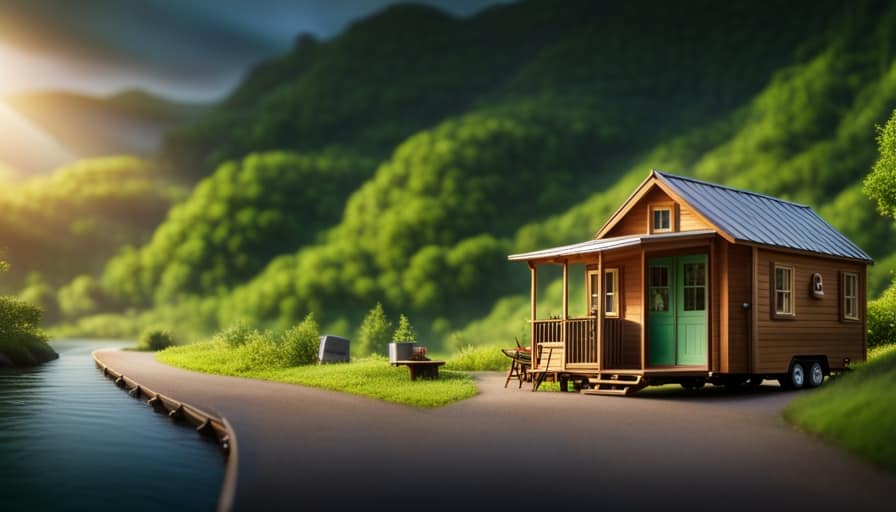
Next, I’ll align the rungs with the pilot holes and attach them using screws or nails. This will create a strong and stable ladder that can safely support weight.
Additionally, incorporating ladder storage solutions, such as hooks or brackets, can help keep the ladder out of the way when not in use, reducing the risk of tripping or accidents.
Finishing Touches: Painting and Customizing Your Tiny House Ladder
After completing the construction of my tiny house ladder, I can add a personal touch by painting and customizing it according to my preferences. Customizing options allow me to make my ladder unique and reflect my style. Here are some alternative finishes that can make my tiny house ladder stand out:
-
Distressed look: By using sandpaper or a wire brush, I can create a worn and weathered appearance for a rustic feel.
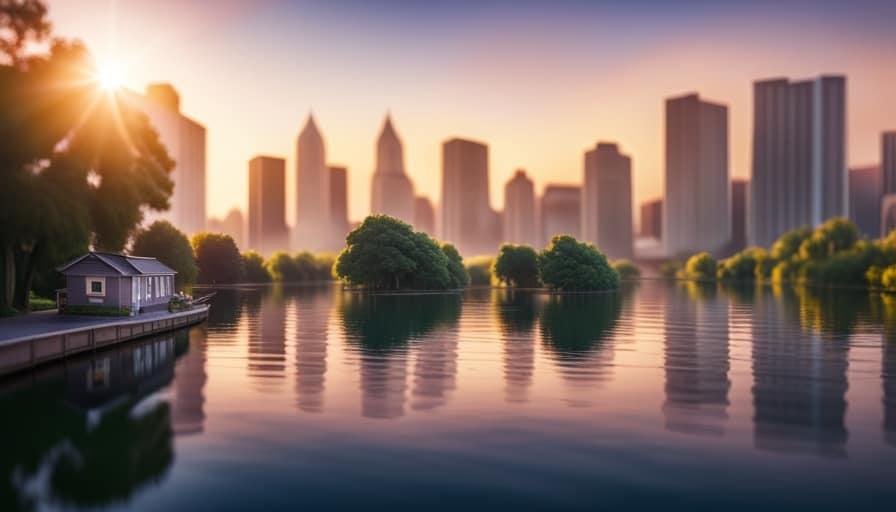
-
Stenciled designs: Adding stenciled patterns or motifs can add a touch of creativity and personality to the ladder.
-
Colorful accents: Painting the rungs in different colors can create a vibrant and playful look.
-
Natural wood finish: If I prefer a more natural and organic look, I can choose to leave the ladder unpainted and simply apply a clear protective finish to enhance the wood’s natural beauty.
Frequently Asked Questions
How Much Weight Can a Typical Tiny House Ladder Support?
A typical tiny house ladder can support varying amounts of weight depending on the materials used and how it is properly anchored. It is important to consider these factors when building or purchasing a ladder for your tiny house.
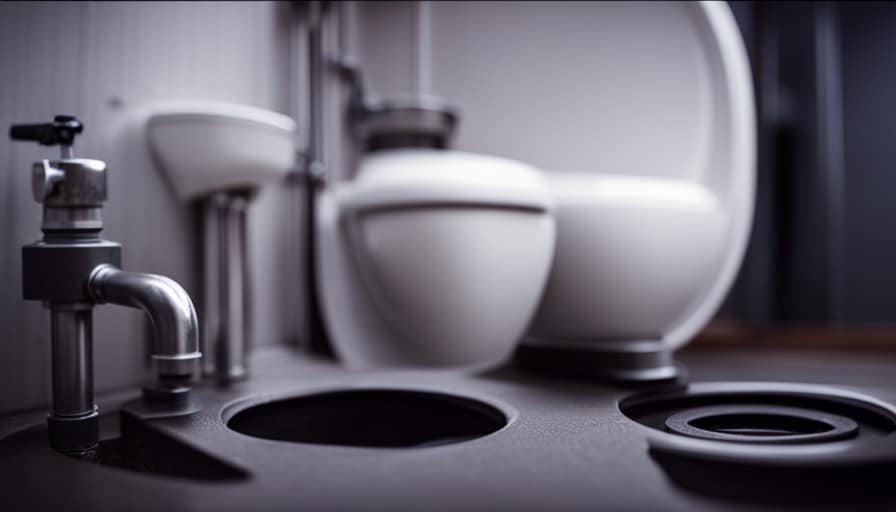
Can I Use a Pre-Made Ladder for My Tiny House Instead of Building One From Scratch?
Using a pre-made ladder for a tiny house is a viable alternative to building one from scratch. However, consider the pros and cons. Building allows customization, while buying offers convenience. Evaluate your needs and skills before deciding.
Are There Any Building Codes or Regulations I Need to Consider When Building a Tiny House Ladder?
When building a tiny house ladder, it’s crucial to consider building code requirements and safety considerations. Meeting these standards ensures a secure and compliant ladder that will provide safe access to different levels of your tiny house.
Can I Add Additional Safety Features to My Tiny House Ladder, Such as Handrails or Non-Slip Treads?
Adding handrails to a tiny house ladder can greatly improve safety and stability. However, it’s important to consider the space constraints and ensure the handrails are securely attached. Non-slip treads can also enhance traction and prevent accidents.
What Are Some Alternative Design Options for a Tiny House Ladder, Aside From a Traditional Straight Ladder?
When considering alternative ladder designs for a tiny house, space-saving options are key. Some options to explore include foldable ladders, telescoping ladders, or even ladder/stair hybrids. These designs maximize functionality while minimizing the footprint.

Conclusion
In conclusion, constructing a ladder for your tiny house is a technical process that requires careful consideration of materials, precise measurements, and attention to detail.
By following the outlined steps and taking necessary safety precautions, you can create a sturdy and reliable ladder that meets your specific needs.
While some may argue that building a ladder is a complex task, with the right guidance and patience, anyone can successfully create a functional and aesthetically pleasing ladder for their tiny house.
I’m Theodore, and I love tiny houses. In fact, I’m the author of Tiny House 43, a book about tiny houses that are also tree houses. I think they’re magical places where imaginations can run wild and adventures are just waiting to happen.
While tree houses are often associated with childhood, they can be the perfect adult retreat. They offer a cozy space to relax and unwind, surrounded by nature. And since they’re typically built on stilts or raised platforms, they offer stunning views that traditional homes simply can’t match.
If you’re looking for a unique and romantic getaway, a tree house tiny house might just be the perfect option.
Beginners Guides
How Do I Hook up a Tiny House

I have always fantasized about living in a small house, but connecting it to utilities seemed overwhelming. That’s why I chose to explore the realm of small house hookups and share my discoveries with you.
In this article, we’ll explore everything from choosing the right location to connecting to water, electricity, and sewage systems. So, if you’re ready to turn your tiny house dreams into reality, let’s get started on this step-by-step journey together.
Key Takeaways
- Choose a clean and safe water source and use a water pressure regulator and filtration system.
- Consider grid connection for reliable electricity and install solar panels and batteries for free electricity.
- Install a septic tank or connect to a municipal sewer system and use composting toilets and greywater systems for an eco-friendly approach to waste management.
- Ensure proper ventilation for good air quality, implement fire safety measures, and comply with safety regulations and building codes.
Choosing the Right Location for Your Tiny House
I’ve always dreamed of finding the perfect spot to set up my tiny house. When choosing the right location, there are two important factors to consider: zoning regulations and environmental impact.
First, it’s crucial to understand the zoning regulations in the area where you plan to place your tiny house. Different jurisdictions may have specific requirements and restrictions regarding the size, placement, and usage of tiny houses. Researching and complying with these legal requirements will ensure a smooth and hassle-free experience.

Additionally, it’s essential to consider the environmental impact of your chosen location. Look for a spot that minimizes disruption to the natural surroundings and promotes sustainability. Consider factors such as access to public transportation, proximity to amenities, and the potential for renewable energy sources.
Water Hookup: Connecting Your Tiny House to a Water Source
To connect my tiny house to a water source, I’ll need to use a hose and a water pressure regulator.
First, I’ll locate the water source and ensure it’s clean and safe.
Next, I’ll attach the water pressure regulator to the hose to control the water flow. This is important to prevent any damage to the plumbing system in my tiny house.
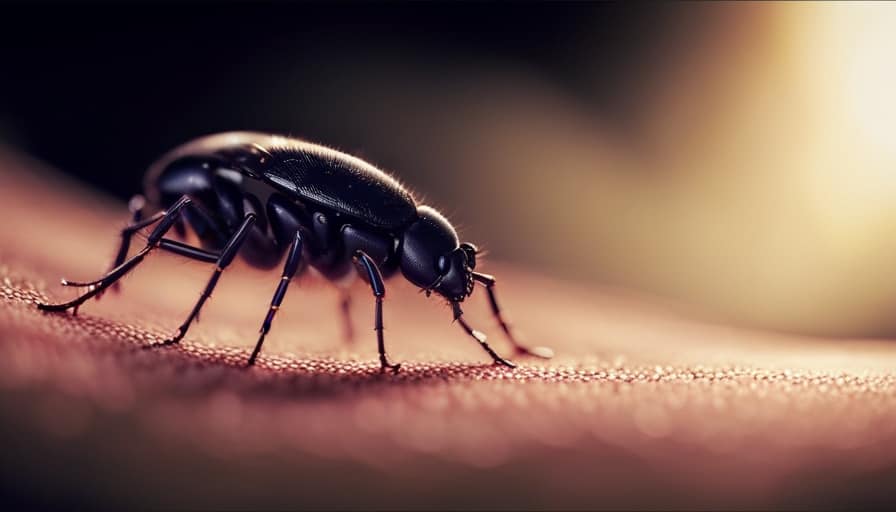
Before connecting the hose to the water source, it’s recommended to use a water filtration or purification system to ensure clean and safe water for everyday use.
Once the hose is connected, I’ll turn on the water source and check for any leaks.
It’s important to regularly maintain and clean the water filtration or purification system to ensure optimal performance and safe drinking water in my tiny house.
Powering Your Tiny House: Electricity Hookup Options
There are several electricity hookup options available for powering my tiny house. The most common ones are grid connection, solar power, and generator.
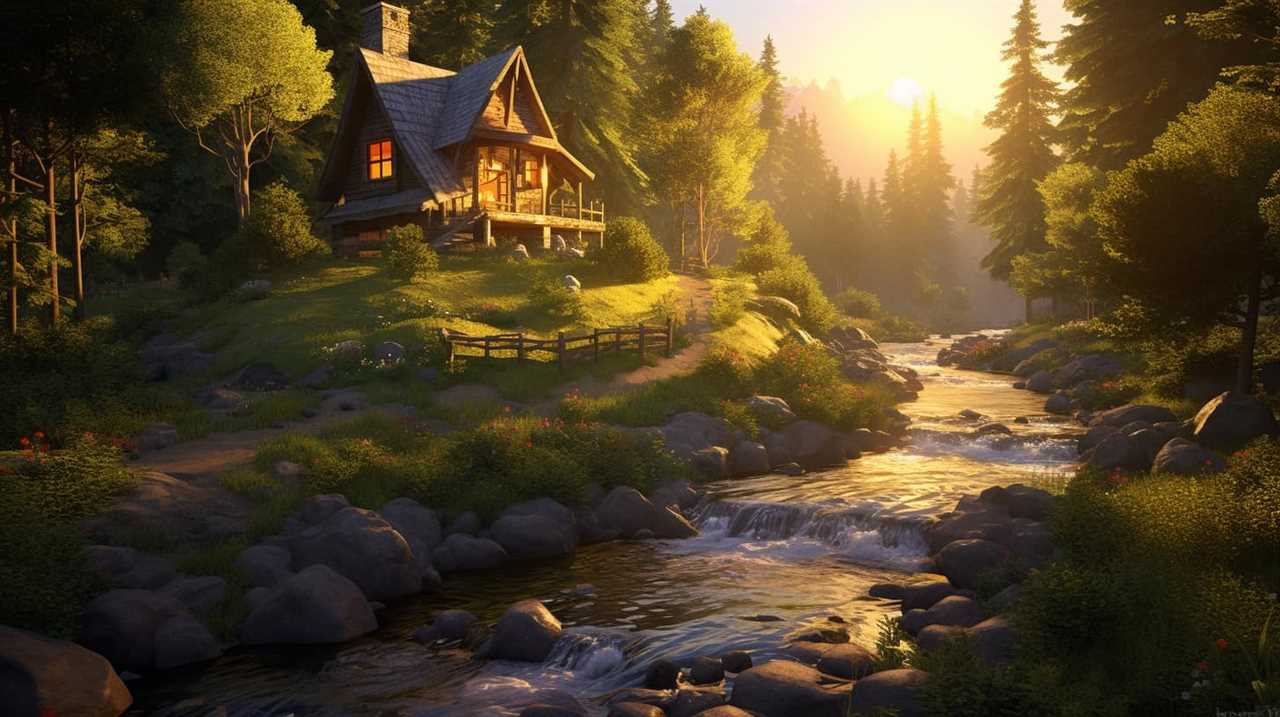
Grid connection involves connecting my tiny house to the local power grid. This option provides a reliable source of electricity. It requires installing a meter and paying monthly utility bills.
On the other hand, solar power is a more sustainable and environmentally friendly option. By installing solar panels on the roof of my tiny house, I can harness the power of the sun to generate electricity. Though it requires an initial investment in the solar panels and batteries, it can provide me with free electricity in the long run.
Lastly, generator options are available for those who prefer a backup power source. A generator can be used to power my tiny house when there’s no access to grid electricity or when the solar panels aren’t generating enough power. It’s important to choose a generator that’s suitable for the power needs of my tiny house and to have a reliable fuel source.
Transitioning into the next section on waste management, it’s important to consider how to hook up my tiny house to sewage systems.

Waste Management: Hooking up Your Tiny House to Sewage Systems
I can connect my tiny house to sewage systems using either a septic tank or a sewer hookup. When it comes to waste management in a tiny house, there are a few options to consider. Here are three ways to hook up your tiny house to sewage systems:
-
Septic tank: Installing a septic tank requires digging a hole in the ground and placing a large tank where waste can be collected and treated. This is a more permanent solution that requires regular maintenance and pumping.
-
Sewer hookup: If your tiny house is located in an area with access to a municipal sewer system, you can connect directly to it. This option eliminates the need for a septic tank and allows for easy disposal of waste.
-
Composting toilets and greywater systems: If you prefer a more eco-friendly approach, you can install a composting toilet and a greywater system. Composting toilets use natural processes to break down waste, turning it into compost. Greywater systems collect and filter wastewater from sinks and showers, allowing it to be reused for irrigation.
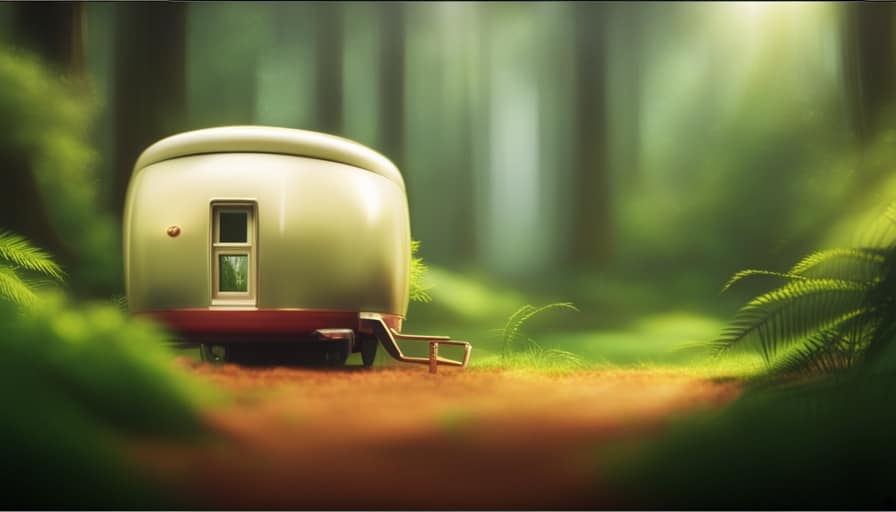
By utilizing these waste management options, you can ensure a clean and efficient sewage system for your tiny house.
Transitioning into the next section, it’s important to also consider safety and compliance in all aspects of your tiny house hookups.
Ensuring Safety and Compliance in Tiny House Hookups
One must ensure that their tiny house hookups are safe and compliant with regulations. Ensuring proper ventilation and fire safety measures are crucial steps in making sure that your tiny house is a safe and comfortable place to live. Here are some steps to follow:
-
Ventilation: Proper ventilation is important to maintain good air quality and prevent the buildup of moisture and odors. Install exhaust fans or vents in the kitchen, bathroom, and any other areas where moisture or fumes may accumulate.

-
Fire Safety Measures: Fire safety is paramount in any living space. Install smoke detectors and carbon monoxide detectors in your tiny house. Place fire extinguishers in accessible locations and ensure that they are regularly inspected and maintained.
-
Compliance with Regulations: Familiarize yourself with local building codes and regulations to ensure that your tiny house meets all safety requirements. This includes electrical, plumbing, and structural components.
By taking these precautions, you can enjoy your tiny house while also ensuring the safety and compliance of your hookups.
| Safety Measures | Steps to Follow |
|---|---|
| Ventilation | Install exhaust fans or vents in kitchen, bathroom, and other areas where moisture or fumes accumulate. |
| Fire Safety Measures | Install smoke detectors, carbon monoxide detectors, and fire extinguishers. Familiarize yourself with local building codes and regulations. |
| Compliance with Regulations | Ensure that your tiny house meets all safety requirements, including electrical, plumbing, and structural components. |
Frequently Asked Questions
How Much Does It Cost to Hook up a Tiny House to a Water Source?
When hooking up a tiny house to a water source, the cost can vary depending on factors like location and type of connection. It’s important to compare costs and consider alternative options to find the best solution for your budget.
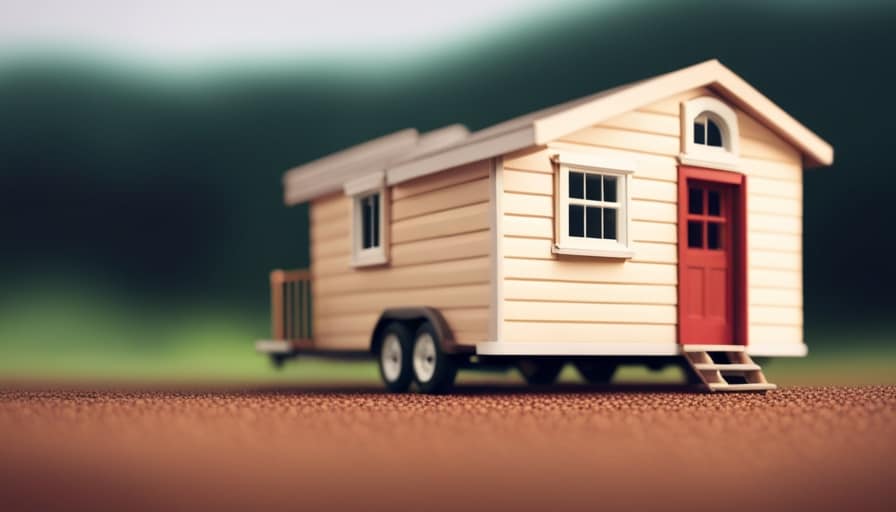
Can I Hook up My Tiny House to a Well Instead of a Municipal Water Source?
Well water versus municipal water for a tiny house has its pros and cons. While a well can provide independence and cost savings, it requires maintenance and may have limited supply. Municipal water offers convenience but comes with monthly bills.
Are There Any Specific Electrical Codes or Regulations I Need to Be Aware of When Hooking up My Tiny House?
When hooking up a tiny house, it’s crucial to be aware of electrical code requirements and safety precautions. These regulations ensure that your electrical system is safe and up to standard. Always consult with a licensed electrician to ensure compliance.
How Often Do I Need to Empty My Tiny House’s Sewage System?
To maintain my tiny house sewage system, I make sure to clean it regularly. The frequency depends on usage, but generally, it needs to be emptied every 1-3 weeks. Proper maintenance ensures a clean and odor-free living environment.
Can I Install Solar Panels to Power My Tiny House Instead of Connecting to the Grid?
I can install solar panels to power my tiny house instead of connecting to the grid. It offers benefits like energy independence, lower utility bills, and environmental friendliness. However, it may require a larger upfront investment and limited power supply on cloudy days.
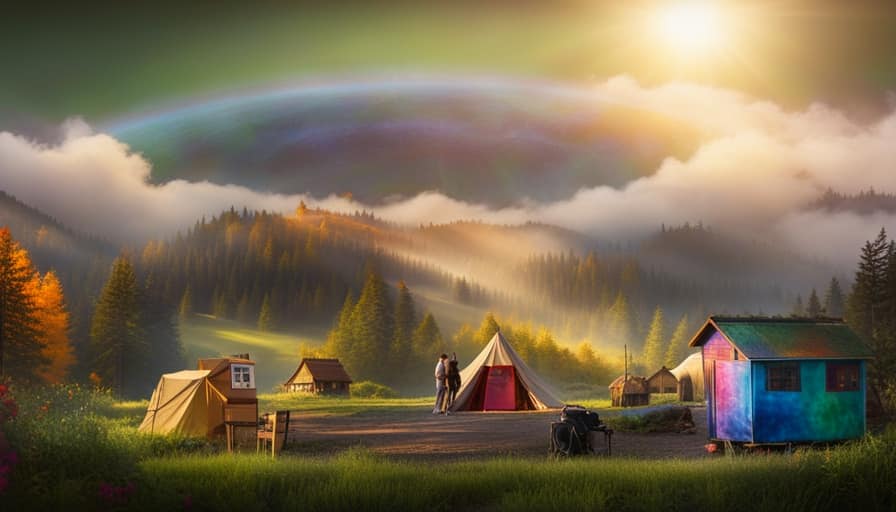
Conclusion
In conclusion, hooking up a tiny house requires careful consideration of several factors. These include the location of the house, the available options for water hookup, the available options for electricity hookup, and waste management. By following the step-by-step instructions provided in this article, you can ensure a safe and compliant setup for your tiny house.
So, are you ready to embark on your tiny house adventure and create a cozy and sustainable living space?
I’m Theodore, and I love tiny houses. In fact, I’m the author of Tiny House 43, a book about tiny houses that are also tree houses. I think they’re magical places where imaginations can run wild and adventures are just waiting to happen.
While tree houses are often associated with childhood, they can be the perfect adult retreat. They offer a cozy space to relax and unwind, surrounded by nature. And since they’re typically built on stilts or raised platforms, they offer stunning views that traditional homes simply can’t match.
If you’re looking for a unique and romantic getaway, a tree house tiny house might just be the perfect option.
-

 Beginners Guides2 weeks ago
Beginners Guides2 weeks agoHow To Buy A Tesla Tiny House
-

 Energy Efficiency1 month ago
Energy Efficiency1 month agoBest Tiny Homes For Cold Climates
-

 Beginners Guides7 days ago
Beginners Guides7 days agoTiny House Nation Where Are They Now Stephanie
-

 Tiny House Resources (e.g., legalities, cost, insurance, FAQs)2 months ago
Tiny House Resources (e.g., legalities, cost, insurance, FAQs)2 months agoDo Tiny Homes Need Planning Permission?
-

 Beginners Guides2 weeks ago
Beginners Guides2 weeks agoFrom The Show Tiny House Nation How Many Keep Their Tiny House?
-

 Beginners Guides2 months ago
Beginners Guides2 months agoUsing a Climbing Net For Treehouse Construction
-

 Beginners Guides2 months ago
Beginners Guides2 months agoHow to Build a Treehouse Without Drilling Into the Tree
-
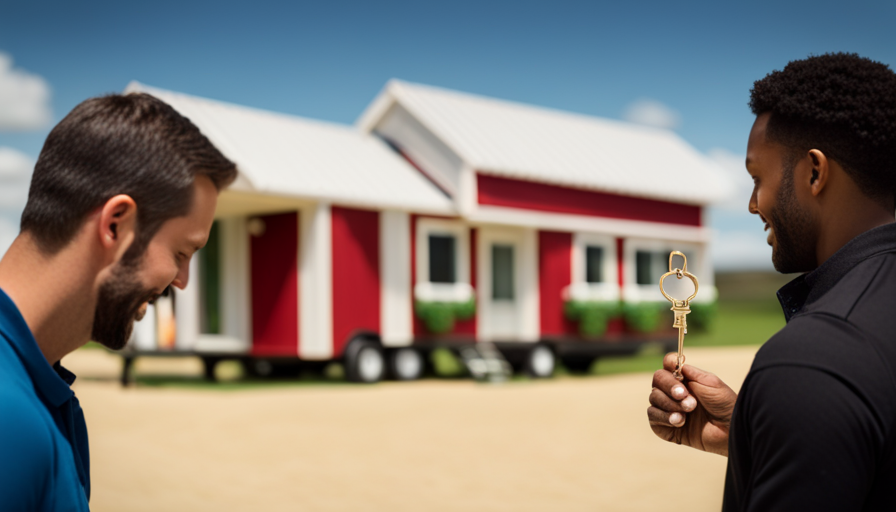
 Beginners Guides3 weeks ago
Beginners Guides3 weeks agoTiny House Nation Who Pays For The Houses




